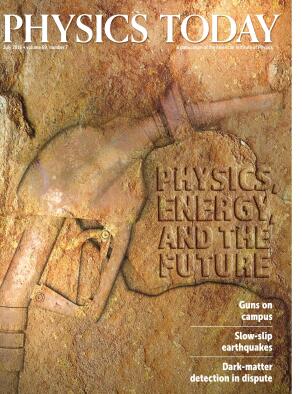The linear no-threshold theory: Readers weigh in
DOI: 10.1063/PT.3.3216
Petitions filed in 2015 with the US Nuclear Regulatory Commission seek the rejection of the linear no-threshold (LNT) hypothesis of the dose-response function for low-level ionizing radiation. We have filed documents in support of those petitions. Jeffry Siegel, Charles Pennington, and Bill Sacks, in their letter
In our study 1 200 cases with primary lung cancer were each matched in sex and age to two controls from the same health maintenance organization; that methodology gave a better socioeconomic, geographical, and health-care match than population-based controls. Other important methodology improvements were also made compared with earlier American studies. Analysis of the data produced unexpected support for a protective, or hormetic, effect at the low doses typical of residential radon exposures.
The average control exposure in our study was 66.3 Bq/m3 but the average cancer-case exposure was lower, 60.2 Bq/m3 (with one outlier removed)― the opposite of an LNT perspective. But that was not an unusual result. The pooling of seven previous North American studies found 2 mean values of 71.1 Bq/m3 for controls and 69.8 Bq/m3 for cases, yet that result went unmentioned: Daniel Krewski and his coauthors concentrated on presenting only evidence that supported the LNT hypothesis. If those mean values had been the first results known, would LNT ever have been invented?
The hormetic benefit we found persisted when we adjusted for smoking history, years of home residency, job exposure to carcinogens, education level, and household income. Indeed, those adjustments yielded a nearly threefold reduction in the risk of cancer from increased radon concentrations (compared with a twofold reduction before adjustment). And statistical significance (95% confidence interval) was reached for a hormetic effect.
Krewski and coauthors presented a detailed sensitivity analysis whereby their statistical LNT models were recalculated when the individual studies were removed one by one. Interestingly, the results were no longer statistically significant when the Iowa data were excluded, suggesting that the evidence supporting LNT is based not on multiple North American studies but only on the Iowa study. Moreover, as we have pointed out, 1 the Iowa study relied on an unusually broad reference exposure range, which, based on the hormetic effect we found, raises the apparent effect of higher exposure levels.
Based on the results of our study, we feel there is compelling evidence both to reject the LNT hypothesis for low-level radon exposure and to support a hormetic, beneficial range in the dose–response function.
References
1. R. E. Thompson et al., Health Phys. 94, 228 (2008). https://doi.org/10.1097/01.HP.0000288561.53790.5f
2. D. Krewski et al., J. Toxicol. Environ. Health A 69, 533 (2006). https://doi.org/10.1080/15287390500260945
More about the Authors
Donald F. Nelson. (dfnelson@charter.net) Worcester Polytechnic Institute, Worcester, Massachusetts.
Richard E. Thompson. Johns Hopkins Bloomberg School of Public Health, Baltimore, Maryland.
Joel H. Popkin. St. Vincent Hospital Department of Medicine, Worcester Medical Center, Worcester, Massachusetts.
Zenaida Popkin. St. Vincent Hospital Department of Medicine, Worcester Medical Center, Worcester, Massachusetts.




